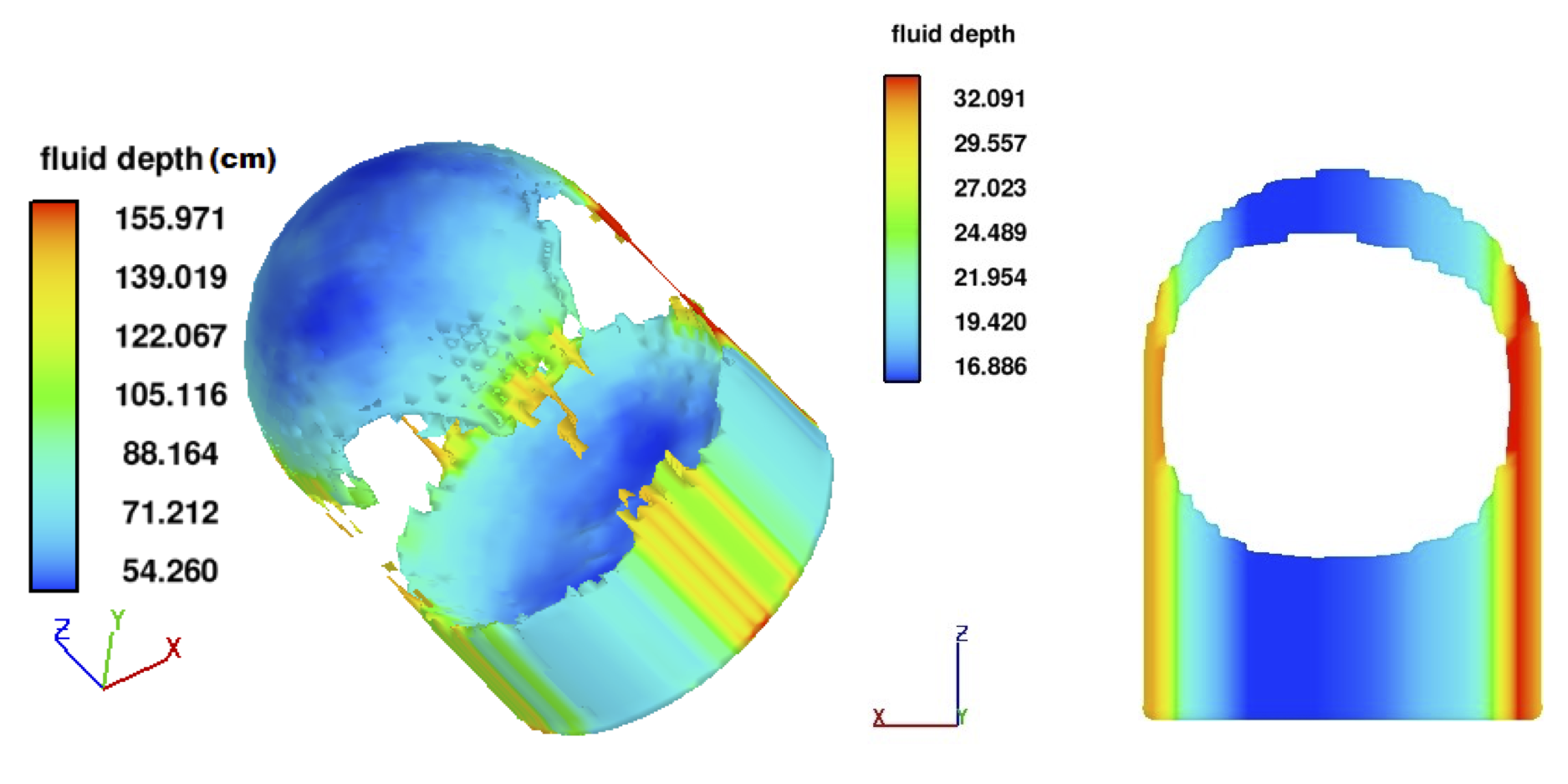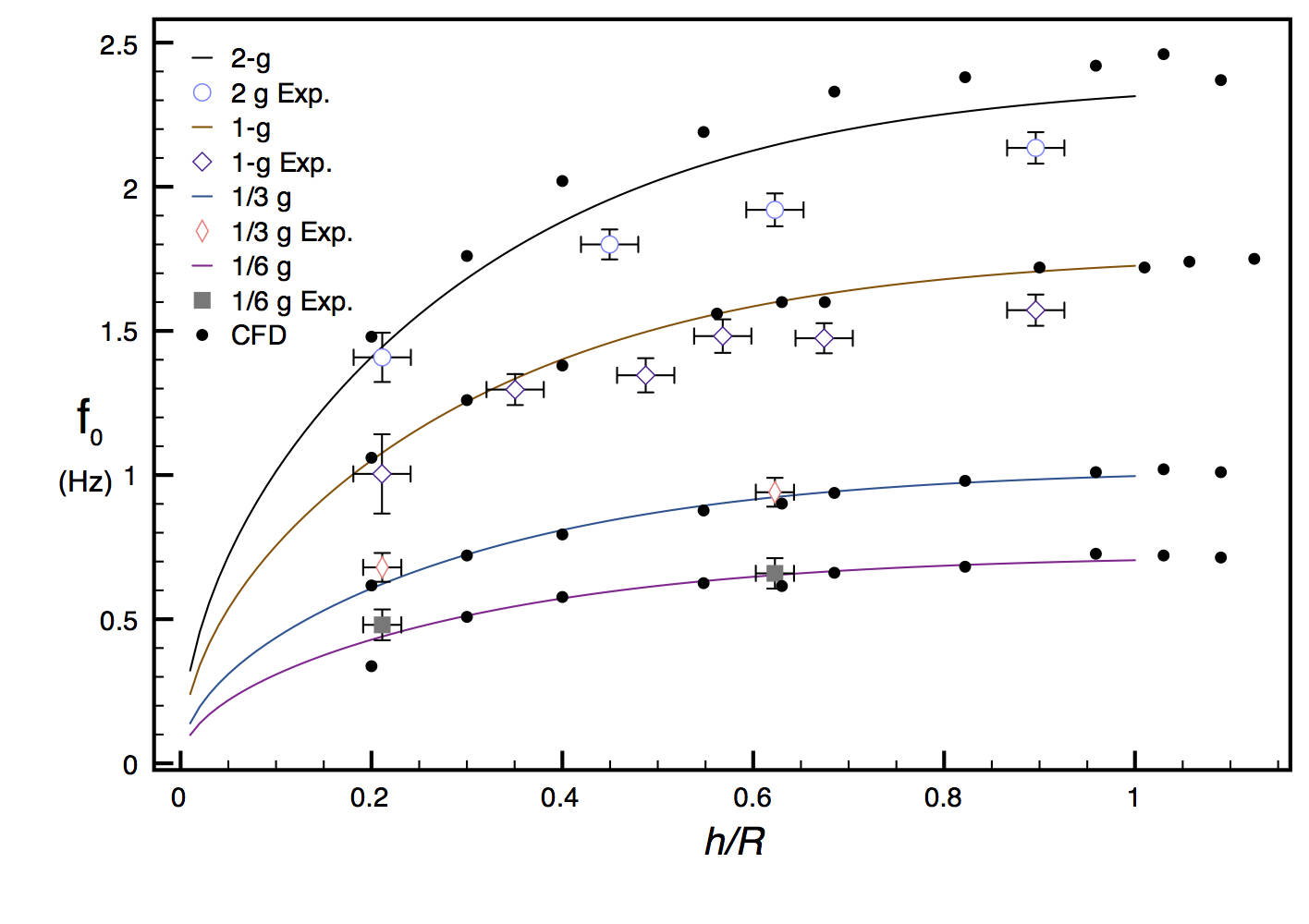Propellant Slosh in Orion
Slosh in the Orion Service Module Propellant Tanks
In collaboration with Lockheed Martin Space Systems, Carthage students modeled the slosh dynamics of the Orion Service Module’s propellant tanks. We conducted both low-gravity flight-testing and extensive computer modeling of the slosh dynamics of propellant at different fill-levels.
Experiment Background
In fluid dynamics, slosh refers to the movement of liquid inside a hollow object. Slosh control of propellant is a significant challenge to spacecraft stability. Mission failure has been attributed to slosh-induced instabilities in several cases [Robinson,1964], [Wade, 2010], [Space Exploration Technologies Corp., 2007]. While propellant masses are highest in the initial phases of a mission (launch and orbital insertion), slosh control is particularly impor- tant in the latter stages of the lunar return mission envisioned in the Constellation/Orion
The Orion capsule serves as the crew launch and return vehicle of the Constellation program and consists of a crew module (CM) and service module (SM). In addition to housing thrusters, propellant and oxidizer for lunar return maneuvers, the SM provides power and life-support services to the Orion spacecraft. In support of its main engine, the Aerojet AJ- 10 rocket engine, the SM contains two propellant and two oxidizer tanks with a total launch mass of 8300kg of propellant and oxidizer [NASA, 2010]. The bipropellant system consists of mono-methyl hydrazine (MMH) and the oxidizer N2O4 (NTO). As a substantial portion of the initial weight of the SM is propellant/oxidizer, an understanding the slosh dynamics in the SM tanks is critical.

As the propellant level decreases throughout a mission, the effects of sloshing forces on the remaining fuel become more prominent. When the tank is full or nearly so, the fuel lacks the open space to slosh. However in the latter stages of the mission, when most of the fuel has been consumed, the fuel has sufficient volume to slosh and possibly disturb the flight trajectory. This sloshing can ultimately lead to wobble in a spinning spacecraft and self-amplifying oscillations that can result in failure of individual instruments or failure of the entire structure. The dynamics of a fluid that interacts with the walls of its container are complicated and challenging to predict. The effects of sloshing on bodies in motion are significant and in some cases devastating. These effects remain prominent even when the propellant volume represents only 0.3% of the total spacecraft mass.

Student Involvement
Katelyn Hartstern, Isa Fritz, Stephanie Finnvik, Bradley Frye, Samantha Kreppel
Flight Campaigns
2010 NASA SEED
Related Presentations
Slosh in the Orion Service Module Propellant Tanks
Reports and Publications
Slosh Dynamics in the Orion Downstream Propellant Tank (Proceedings Abstract)
Crosby, K.M., Bakkum, A., Finnvik, S., Fritz, I., Frye, B., Grove, C., Hartstern, K., Kreppel, S., Schultz, K., Braun, J.P., Annual Meeting of the Lunar Exploration Analysis Group, held September 14-17, 2010 in Washington, D. C.

